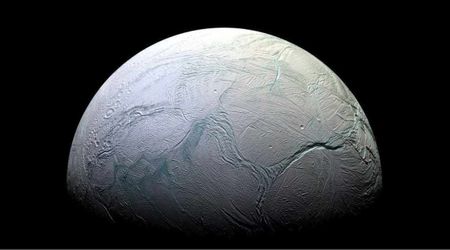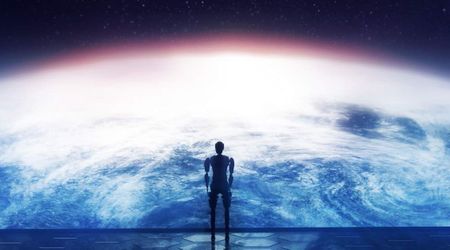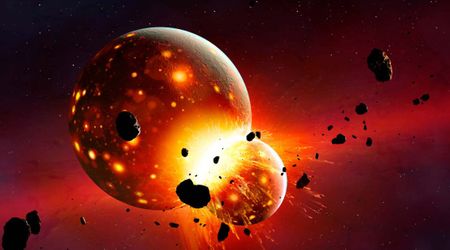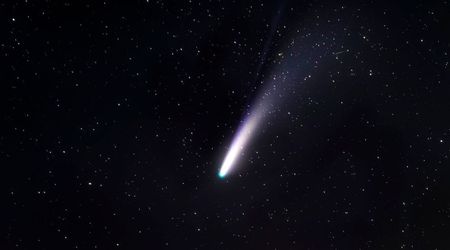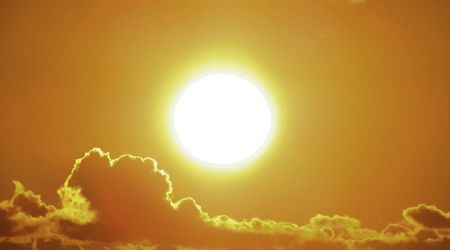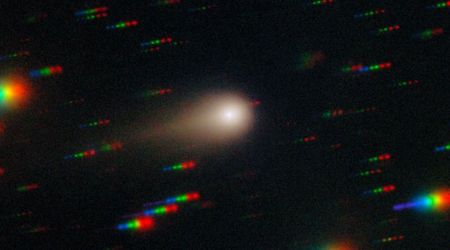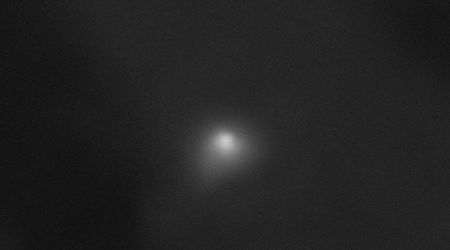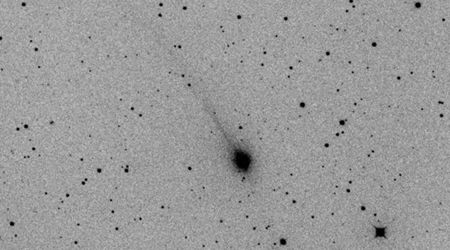What are asteroids made of?


Asteroids, in short, are pieces of solid matter that exist in space. Specifically, Asteroids are a ‘hangover’ from the very early formation of the Solar system, making Asteroids around 4.5 billion years old. The Planets and Asteroids were formed when dust particles collided during the early phase of the Solar System.
How did they form?
Due to the gravitational pull of the matter formed in these collisions of dust and gas particles, they began to grow. Whilst a proportion of this matter grew large enough to form the Planets, a lot of this matter remained in a smaller, rocky form. This is because the matter that makes up the Asteroids as we know them today, were affected by the gravitational pull of Jupiter. This is how Asteroids came to be.
The majority of Asteroids found in space can be found in what is called the Main Asteroid Belt. Like planets, they orbit the Sun but they are significantly smaller than the planets. The Asteroid belt exists between the planets Jupiter and Mars. However, Asteroids also exist in paths that other planets orbit. Meaning that they move with the orbit of those specific planets.
These Asteroids are called Trojans and can be found orbiting the planets Jupiter, Mars, Neptune and Earth. It is estimated that there are up to 150 million Asteroids in space today.
What is their chemical composition?
Broadly speaking, there are three types of Asteroid. Chondrite, Silicaceous and Nickel-Iron. These are respectively known as C-type, S-types and M-types. The Sun is paramount in understanding the composition of the three types of Asteroids.
The Asteroids on the outer belt are made up of predominantly carbon. This is where we find C-type Asteroids. C-type asteroids are made up of a large amount of Carbon. The elements of nitrogen, oxygen and hydrogen are also present in C-type Asteroids, however, these elements are found in smaller quantities.
In the inner Asteroid belt, we find S-type Asteroids. These Asteroids are made up of silicate rock. In the centre, we find the M-type Asteroids. These are metallic asteroids. M-type Asteroids ‘are composed of up to 80% iron and 20% a mixture of nickel, iridium, palladium, platinum, gold, magnesium and other precious metals such as osmium, ruthenium and rhodium.
C-type or Chondrite Asteroids are the most abundant of all the Asteroids. It is reported that 80% of Asteroids fall into the C-type category. They tend to be found on the outer edge of the Asteroid Belt, meaning that they are furthest away from the Sun. This distance from the Sun is reflected in their chemical composition. C-type Asteroids contain a large amount of Carbon and are widely likened to being of similar composition as the Sun; because of the absence of Helium and Hydrogen from its composition. Nasa describes C-type Asteroids as being ‘among the most ancient objects in the solar system.
S-type or silicaceous Asteroids exist in the inner edge of the Asteroid Belt. The inner edge is closer to the planet Mars. S-type asteroids are composed of metallic iron, magnesium and silicate materials such as oxygen and silicon. Comparisons between The S-type Asteroids and Stony Meteorites are often drawn, due to the striking similarities in both matters' composition. S-type Asteroids are reported to make up around 17% of the Asteroids in the Asteroid Belt.
The M-type Asteroids occupy the central area of the Asteroid Belt. M-type Asteroids are arguably more complex to categorise when it comes to their chemical composition. Widely speaking M-type Asteroids are made of the Nickel-Iron. However, according to NASA, there are ‘compositional differences related to how far from the Sun they formed. Meaning that the distance each individual M-type Asteroid forms from the Sun has a direct impact on their chemical makeup. This has resulted in some M-type Asteroids having higher percentages of the Nickel-Iron element than others.
Nasa attributes this to the fact that some M-type Asteroids have been exposed to higher temperatures, meaning that they experienced partial melting, which caused the iron in the Asteroid to sink into the centre. This subsequently forced what’s known as Basaltic lava to the surface. Thus, altering the composition of the Asteroids that underwent this process

Bennu is a carbon rich asteroid classified as a Near-Earth Objects (NEOs).
Do they contain the building blocks for life?
A number of building blocks of life have been discovered in asteroids. These include amino acids, the building blocks of proteins, and nucleobases, the building blocks of nucleic acids (DNA and RNA). In addition, organic compounds such as hydrocarbons and other molecules that are essential for life have been found in asteroids.
For example, the Murchison meteorite, which fell to Earth in 1969, was found to contain more than 70 different amino acids, as well as other organic compounds such as hydrocarbons and carboxylic acids. In addition, traces of water have been found in some asteroids. These discoveries suggest that the building blocks of life may have been delivered to Earth by comets and asteroids, and that similar building blocks may exist on other planets and moons in the Solar System.
Do they contain the building blocks for life?
A number of building blocks of life have been discovered in asteroids. These include amino acids, the building blocks of proteins, and nucleobases, the building blocks of nucleic acids (DNA and RNA). In addition, organic compounds such as hydrocarbons and other molecules that are essential for life have been found in asteroids.
For example, the Murchison meteorite, which fell to Earth in 1969, was found to contain more than 70 different amino acids, as well as other organic compounds such as hydrocarbons and carboxylic acids. In addition, traces of water have been found in some asteroids. These discoveries suggest that the building blocks of life may have been delivered to Earth by comets and asteroids and that similar building blocks may exist on other planets and moons in the Solar System.
Whilst these are important discoveries, it's important to note that they don't necessarily mean that life exists or existed on them, but rather that the ingredients for life were present in those asteroids.
These discoveries have led to the theory of Panspermia, which suggests that life on Earth may have originated from microorganisms that were carried to Earth on comets and asteroids.
Can asteroids be mined?
In the modern era, the rich chemical composition of Asteroids has sparked an explosion in conversations around the possibility and scope for Asteroid mining. Asteroid mining is the practice of mining Asteroids for their minerals. At the time of writing, Asteroid mining only exists in theory; although extensive efforts are being made to bring this theory into practice. The reason for the discussion around Asteroid mining is down to the fact that Asteroids such as the M-type Asteroid are rich in platinum metals.
According to David Flicking, ‘estimates of their abundance on some asteroids, suggests concentrations several times higher than can be found in terrestrial mines11’. In other words, Asteroid mining presents us with the possibility to extract more platinum metals than is possible to extract on Earth today. This is echoed by Charles Q. Choi who cites Planetary Resources as having said that ‘a single 500-meter platinum-rich asteroid can contain more platinum group metals than have ever been mined on Earth throughout human history.12’
The concept of Asteroid mining may seem ‘sky high’ but in 2010, the spacecraft Hayabusa successfully landed on the Asteroid known as Itokawa. Itokawa is an S-type Asteroid. Until recent history (a few hundred years) was an Asteroid that inhabited the inner edge of the Main Asteroid belt. However, Itokawa now exists in the Near-Earth Asteroid belt13. The purpose of Hayabusa? To retrieve a sample of the Asteroids surface, in order to study the composition of Itokawa.
It was found that the minerals that make up this S-type Asteroid were the minerals olivine and pyroxene. Uranium was also found on Itokawa, a composition that allowed scientists to determine that Itokawa collided with another Asteroid some 1.5 billion years ago14.
In December 2020, Hayabusa 2 retrieved a sample of the asteroid Ryugu. According to Nasa, ‘The Hayabusa2 sample will become the seventh curated extraterrestrial collection humans have curated from beyond our planet. Ryugu is a C-type Asteroid that is located on the outer edge of the Main Asteroid Belt. The ability of JAXA and NASA alike to conduct such incredible research on Asteroids only increases the chances of Asteroid mining becoming a commonplace practice in the decades to come.
In addition, NASA scientists have their eyes on an asteroid worth $10,000 quadrillion dollars! Psyche 16 is a 124-mile wide space rock located in the asteroid belt between Jupiter and Mars. It is packed with iron and nickel, so much that the combined value of both precious metals could destabilise the economy! Psyche 16 is a unique M-type asteroid and scientists are keen to send a mission to explore this invaluable space rock. The launch is planned for 2022 and the spacecraft should arrive in the asteroid's orbit by 2026.

The psyche spacecraft should arrive at its destination around 2026. Credit: Maxar/ASU/P. Rubin/NASA/JPL-Caltech
